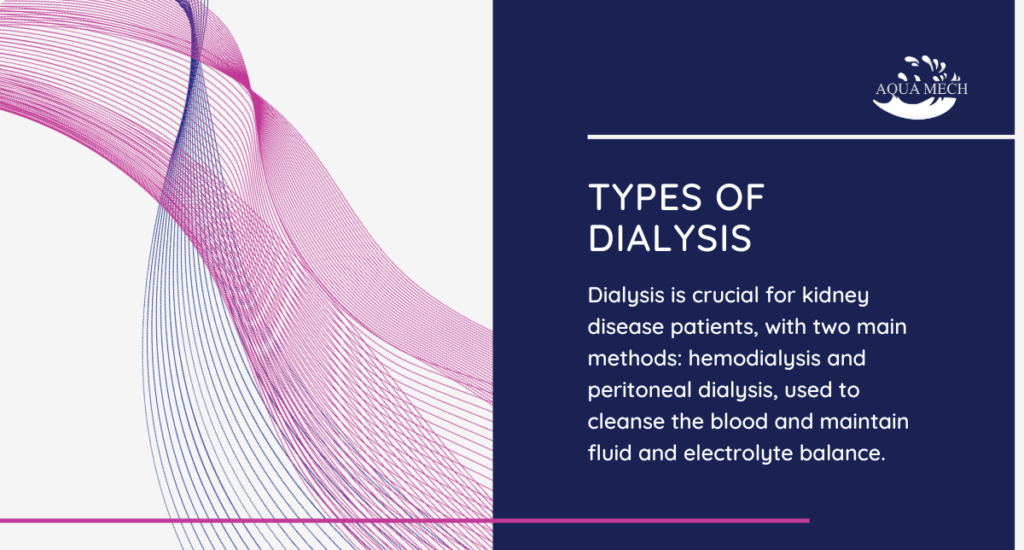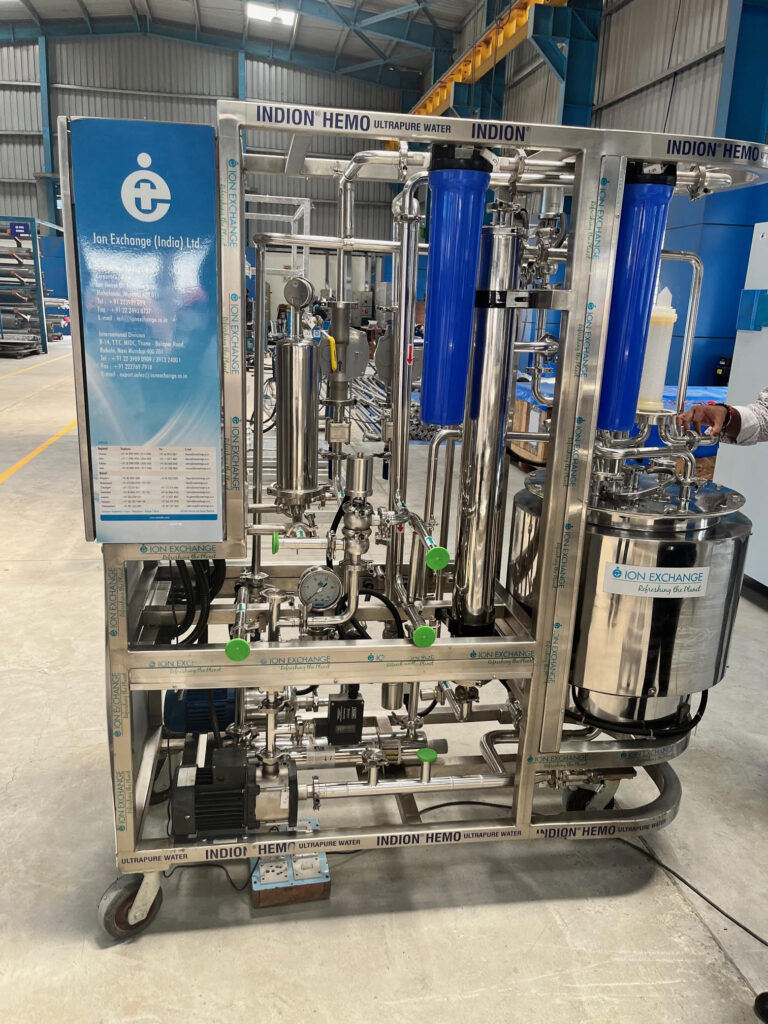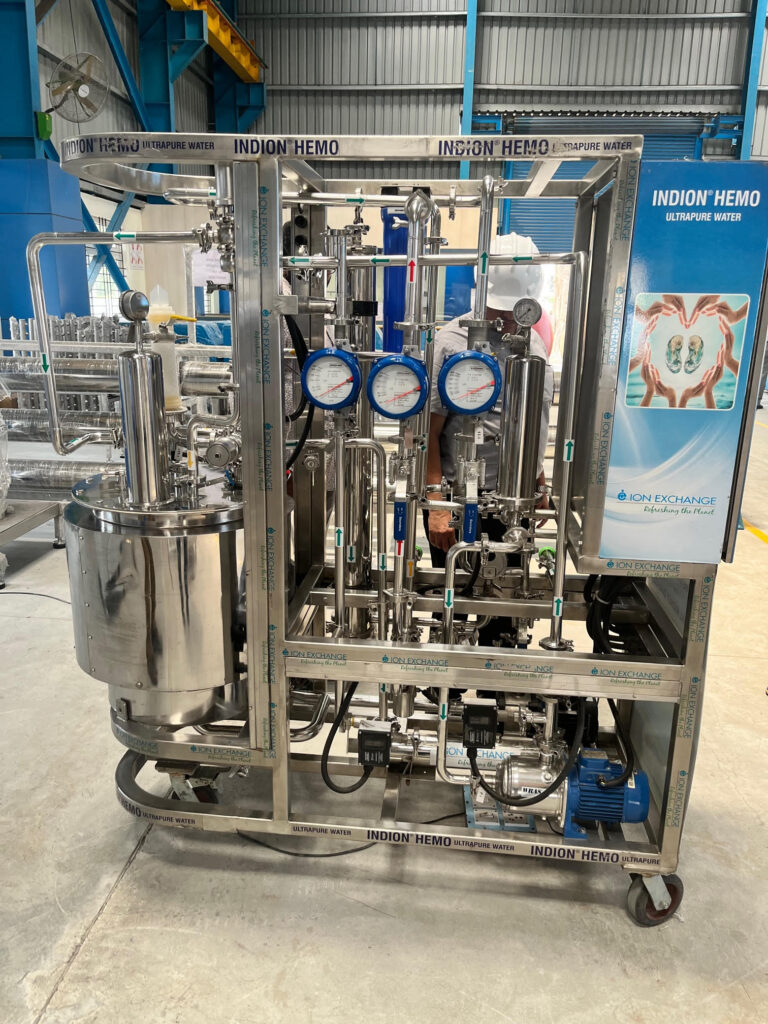Physical Address
304 North Cardinal St.
Dorchester Center, MA 02124
Physical Address
304 North Cardinal St.
Dorchester Center, MA 02124

Hemodialysis is a life-saving medical procedure that provides a glimmer of hope and a second chance at life for patients suffering from acute or chronic kidney disease.
This intricate medical treatment involves the filtration of a patient’s blood to remove waste, excess fluid, and electrolytes, essentially taking on the role of the kidneys when they can no longer function effectively.
Hemodialysis is a cornerstone of healthcare, vital in sustaining the lives of countless individuals, particularly those affected by acute kidney disease (AKD).
Hemodialysis is a kidney replacement procedure that uses a machine to clean the patient’s blood by passing it through a dialyzer, removing waste, and returning purified blood. It’s typically done in a clinical setting under medical supervision, crucial for managing kidney disease.
While the mechanics of hemodialysis may seem straightforward, the precision and reliability of the process are dependent on a crucial, behind-the-scenes element: the quality of water used in the dialysis process. It might be surprising, but water plays a pivotal role in the effectiveness of hemodialysis treatment.
The reason for this is twofold:
In essence, the water quality used for hemodialysis is not just about convenience or preference; it’s a matter of life and death. It’s the unsung hero, quietly but critically supporting healthcare professionals in their mission to restore and improve patients’ quality of life.
In the subsequent sections of this article, we will delve deeper into the various types of water used in hemodialysis, the need for high-quality water treatment solutions, and how these solutions are tailored to meet the unique requirements of the healthcare and hospitality industries.
We will explore the technology behind hemodialysis water treatment systems, their role in maintaining patient safety, and the regulatory landscape that guides these crucial processes.

Hemodialysis:
Hemodialysis, as described earlier, is a highly effective and widely practiced method of kidney replacement therapy. It involves the use of a specialized machine called a hemodialyzer to filter the patient’s blood.
The patient’s blood is drawn from their body and directed through the machine, which contains a semi-permeable membrane. On one side of the membrane, the patient’s blood flows, and on the other side, a cleansing solution known as dialysate is present.
This arrangement facilitates the exchange of waste products and excess fluids from the patient’s blood into the dialysate, effectively purifying the blood.
Hemodialysis is typically conducted in a clinical setting, such as a hospital or dialysis center, and is closely supervised by medical professionals.
Peritoneal Dialysis:
In contrast, peritoneal dialysis is a different method of kidney replacement therapy that can often be administered at home.
Instead of relying on an external machine, peritoneal dialysis utilizes the body’s peritoneum, a natural membrane lining the abdominal cavity, as a filter.
In this method, a cleansing solution, known as a dialysis solution, is introduced into the patient’s abdominal cavity through a catheter. The peritoneum serves as a natural filter, allowing waste products and excess fluids to pass into the dialysis solution.
After a prescribed dwell time, the used dialysis solution is drained, and the fresh solution is introduced, repeating the process.
Peritoneal dialysis is preferred by some patients due to its flexibility and ability to be done at home, but it may not be suitable for all cases.
Hemodialysis takes center stage in the healthcare industry, particularly in hospitals and pharmaceutical companies, for several reasons:
The choice between hemodialysis and peritoneal dialysis depends on individual patient needs, medical conditions, and lifestyle.
While peritoneal dialysis offers more autonomy and convenience for some patients, hemodialysis remains the gold standard in hospitals and pharmaceutical companies where precise control, constant monitoring, and adherence to strict quality standards are essential in providing life-saving care to patients.
Hemodialysis water treatment solutions, which ensure the purity and safety of the water used in this critical procedure, are a fundamental component of healthcare infrastructure in these settings.

Water is the unsung hero of hemodialysis, working silently behind the scenes to ensure the effectiveness and safety of the treatment.
The reasons why water quality is of utmost importance in hemodialysis are as follows:
In light of these reasons, the water used in hemodialysis is not merely a technicality but a matter of life and death.
It’s the foundation upon which patient care is built, quietly supporting healthcare professionals in their mission to restore and enhance the quality of life for those in need.
In the world of hemodialysis, there are several types of water, each with specific purification methods that ensure it meets the required standards. These water types used in Hemodialysis are combination of all three technologies to best suit the treated water quality as per AIIM standards:
Reverse osmosis is a cutting-edge purification method that involves pushing water through a semi-permeable membrane to remove impurities, contaminants, and particles. RO water is exceptionally pure, as it eliminates nearly all dissolved solids, including minerals and microorganisms. This level of purity is necessary to prevent any harm to the patient’s blood during hemodialysis.
Ultrafiltration is a low-pressure membrane technology that is used after the RO for removal of endotoxins which is vital as per the AIIM Standards.
It is recommended to have hot water sanitizable RO and UF systems to withstand sanitization with hot water at 80-degree celsius for one hour.
Wherein the purification system needed is of a smaller capacity. We can also opt for RO + Endotoxin cartridge filter.
Ultraviolet purification utilizes UV light to deactivate or eliminate microorganisms and bacteria in the water. UV treatment ensures that the water used in hemodialysis is free from harmful pathogens that could pose a risk to the patient.
Combining these three types of water, RO, UF, and UV purified water, guarantees that the water used in hemodialysis is of the highest quality, ensuring patient safety, treatment effectiveness, and compliance with regulatory standards.
In the subsequent sections, we will delve deeper into the technology behind hemodialysis water treatment systems, their role in maintaining patient safety, and the critical importance of these systems in healthcare institutions and pharmaceutical companies, particularly in acute kidney disease management.
Feed Water Conditions for Artificial Kidney Dialysis (AKD) RO + UF system:
| Sr. No. | Parameters | Inlet Water Quality |
| a. | pH range, Short Term Cleaning | 1-12 |
| b. | Residual Chlorine | Nil |
| c. | Turbidity | <1 NTU |
| d. | Suspended Solids | Nil |
| e. | SDI | < 4 |
| f. | Temperature | < 40°C |
| g. | Organics and Bacteria | Nil |
| h. | Heavy Metals | < 0.1 ppm |
| i. | TDS | 100-1500 ppm |
| Contaminants | AAMI maximum concentration for dialysis (mg/L) |
| Calcium | 2 |
| Magnesium | 4 |
| Potassium | 8 |
| Sodium | 70 |
| Antimony | 0.006 |
| Arsenic | 0.05 |
| Barium | 0.1 |
| Beryllium | 0.0004 |
| Cadmium | 0.001 |
| Chromium | 0.014 |
| Lead | 0.005 |
| Mercury | 0.0002 |
| Scicnium | 0.09 |
| Silver | 0.005 |
| Aluminium | 0.01 |
| Chloramines | 0.1 |
| Chlorine | 0.5 |
| Copper | 0.1 |
| Fluoride | 0.2 |
| Nitrate (as Nitrogen) | 2.0 |
| Sulphate | 100 |
| Tin | 0.1 |
| Sinc | 0.1 |
| Microbiological Level | Previous Standard | New Standard | Previous Action Level | New Action Level |
| Colony Forming Units | < 200 CFU/ml | < 100 CFU/ml | = 50 CFU/ml | = 50 CFU/ml |
| Endotoxin Units | < 2 EU/ml | < 0.25 EU/ml | = 1 EU/ml | = 0.125 EU/ml |
Water quality is a critical aspect of our daily lives as it directly impacts our health and well-being.
To ensure that water is safe for consumption and use, various parameters need to be monitored and controlled within specific allowable limits. This is where Aquamech comes into play.
Our company is dedicated to improving and maintaining water quality. They provide innovative solutions and technologies to help ensure that water meets the necessary standards and is safe for various applications.
Aquamech has been into high purity water systems since 1999 for pharmaceutical, hospital, personal care, and other hygene industry. We have been promoting latest technologies to produce ultra pure water for these industries.
Hospitals and pharmaceutical companies have unique water quality needs due to the critical nature of their operations.
Hemodialysis water treatment systems designed for these environments prioritize precision, patient safety, and strict adherence to regulatory standards.
These solutions are tailored to the specific requirements of healthcare institutions, ensuring that patients receive the highest standard of care.
To streamline the deployment and management of hemodialysis water treatment systems, they are often integrated into a skid system.
This compact, modular setup includes all the necessary components, such as RO units, UF units, and UV disinfection modules, neatly arranged on a single skid.
This integrated approach simplifies installation and maintenance, reduces footprint requirements, and ensures the smooth operation of the system.
Continuous monitoring and maintenance are non-negotiable aspects of hemodialysis water treatment systems. Here’s why they are crucial:
Hemodialysis water treatment systems are the unsung heroes of the healthcare industry, diligently working behind the scenes to provide patients with the high-quality water required for life-saving treatments.
These systems incorporate advanced purification technologies and are designed for seamless integration into healthcare settings.
Continuous monitoring and maintenance are the pillars that uphold the integrity of these systems, ensuring that they deliver the purest and safest water for patients undergoing hemodialysis.
Implementing hemodialysis water treatment systems in hospitality settings offers several benefits:


| Impurities | Allowable Limit (mg/l) | Causes |
| Aluminum | 0.01 | Dialysis Dementia |
| Chloramines | 0.1 | Acute Hemolytic Anemia |
| Fluoride | 0.2 | Toxicity, Bone Diseases |
| Lead | 0.005 | Gastrointestinal Pain, Muscle Weakness |
| Sulphate | 100 | Nausea, Metabolic Acidosis |
| Calcium | 2 | Hypertension, Nausea, Vomiting |
| Magnesium | 4 | Muscle Weakness |
| Nitrate | 2 | Methemoglobinemia |
| Bacteria | < 100 CFU/ml | Nausea, Vomiting, Bloodstream Infection, Death |
| Endotoxin | < 0.25 EU/ml | Pyrogenic reaction, Death |
The essential role of high-quality water in hemodialysis cannot be overstated. It is the linchpin of patient safety, regulatory compliance, and effective treatment.
Whether in hospitals, pharmaceutical companies, or any healthcare setting, maintaining the purity of water used in hemodialysis is a fundamental requirement, a legal mandate, and a critical step in preserving the well-being and quality of life of patients suffering from kidney disease.
Hemodialysis water treatment systems, which incorporate advanced purification techniques, are the backbone of this life-saving procedure, ensuring that patients receive the care they need, without unnecessary risks or complications.
In the world of healthcare, the significance of water quality in hemodialysis cannot be overstated. It is, quite literally, a matter of life and death.
Hemodialysis water treatment solutions are the unsung heroes behind the scenes, ensuring that the water used in this life-saving procedure is of the highest purity and safety.
Hemodialysis water treatment systems play a pivotal role in safeguarding the well-being of patients battling kidney disease.
These systems meticulously purify water to the most exacting standards, ensuring that impurities, contaminants, and microorganisms are eliminated. In doing so, they protect patients from harm and guarantee the efficacy of the hemodialysis procedure.
The purity of water in this context is not a mere preference but a non-negotiable requirement, and the water treatment systems are the silent guardians that make it possible.
Aquamech offers state-of-the-art hemodialysis water treatment solutions for hospitals, pharmaceutical companies, and healthcare institutions.
Our expert team is available to address your inquiries, assess your specific requirements, and provide customized solutions to enhance patient care by ensuring the highest water quality for life-saving hemodialysis procedures.
Aquamech is committed to delivering essential support for safe and effective treatments, prioritizing patient safety and well-being.